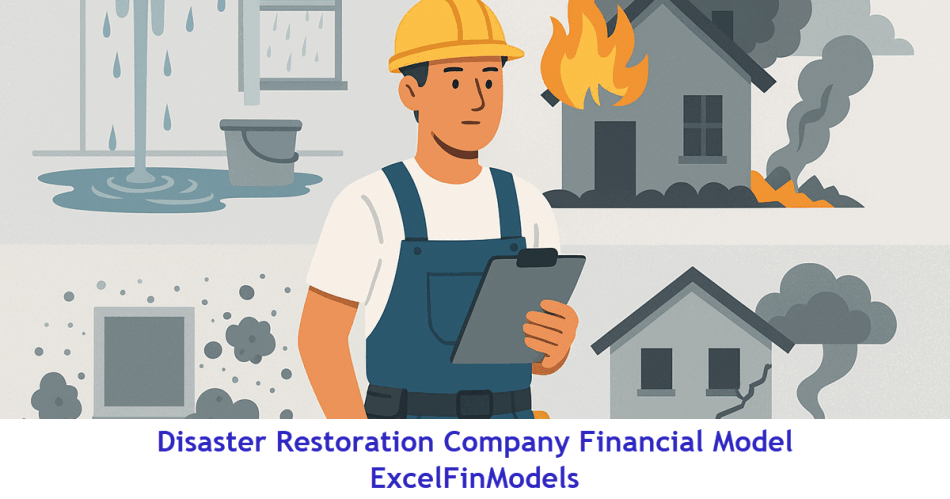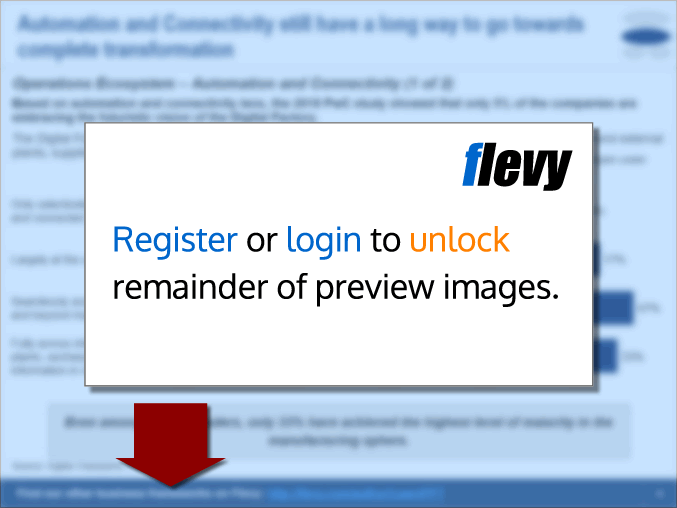Disaster Restoration Company Financial Model (Excel XLSX)
Excel (XLSX)
BENEFITS OF THIS EXCEL DOCUMENT
- Offers a structured framework for projecting revenue, costs, and profitability across diverse restoration service categories.
- Supports informed decision-making for startup planning, investment evaluation, and operational scalability.
- Equips users with a professional-grade tool to prepare investor-ready proforma financials and lender-friendly forecasts.
INTEGRATED FINANCIAL MODEL EXCEL DESCRIPTION
A disaster restoration company specializes in delivering comprehensive recovery solutions for residential, commercial, and industrial properties affected by water damage, fire, mold, and natural disasters. Utilizing advanced restoration techniques and industry-certified procedures, these businesses focus on restoring properties to pre-loss condition quickly, safely, and efficiently. Services typically include water damage restoration, fire and smoke damage cleanup, mold remediation, storm damage repair, structural drying, contents cleaning, odor removal, and emergency response.
This financial model is meticulously designed to analyze and forecast the financial performance of a disaster restoration business, capturing key revenue and cost drivers specific to the restoration industry. It focuses on revenue generation from on-site restoration services, segmented by service categories.
The model delivers a 5-year forecast horizon (60 months) starting from the first forecast month defined in the assumptions tab and includes placeholders for up to 36 months of historical financial data. Designed specifically for disaster restoration service providers, the model incorporates operational variables such as the number of field technicians, billable hours, service mix, and days to operational commencement.
This financial model serves as an essential resource for internal planning, pricing strategies, investment presentations, and financing applications tailored to restoration service businesses.
Financial Model Structure
The model is organized into the following six core sections:
1. Cover Tabs
• Navigation and instructional guidance to help users navigate the model efficiently.
2. Input Tabs
Revenue Assumptions
• Number of restoration technicians
• Billable hours per technician per day
• Operating days per month
• Service categories (e.g., water damage restoration, fire damage cleanup, mold remediation, storm damage repair, structural drying, odor removal, emergency response)
• % of total billed hours allocated to each service type
• Average fee per service type
General Assumptions
• Company name, start date, currency
• Inflation rate, payroll tax, corporate tax
Direct Cost Assumptions
• Cost of restoration supplies, materials, and equipment per service type
• Transportation and subcontractor costs
• Salaries for technicians, supervisors, and field staff
S,G&A Expenses
• Fixed and variable expenses including rent, utilities, administrative payroll, and marketing
CapEx Assumptions
• Capital expenditures for restoration tools and equipment (e.g., dehumidifiers, air scrubbers, moisture meters), service vehicles, furnishings, and office setup
• Depreciation schedules for fixed assets
Working Capital Assumptions
• Inventory turnover assumptions (restoration supplies and materials)
• Accounts receivable/payable cycles
• Minimum cash buffer
Financing & One-Time Expenses
• Loan details, fundraising assumptions
• Initial setup costs (licensing, branding, launch marketing)
3. Output Tabs
• Financial Dashboard
• Sources and Uses of Funds
• Financial Ratios
• Profitability Analysis
• Cash Flow Analysis
4. Financial Statements Tabs
• Monthly and annual projections for:
• Profit & Loss Statement
• Cash Flow Statement
• Balance Sheet
5. Calculation Tabs
• Detailed forecasting of:
• Revenue and cost of services
• Staffing-related expenses
• Capital expenditures
• Financing and debt servicing
6. Advanced Analysis Tabs
• Valuation Model
• Key Performance Indicators (KPIs)
• Revenue analytics
• Expense breakdowns
• Balance Sheet insights
Technical Specifications
• No VBA or Macros: Ensures maximum compatibility
• Circular Reference-Free: Clean and stable calculations
• Excel Compatibility: Fully functional with Excel 2010 and newer versions
Validation Checks
The model includes automated validation tools:
• Green ticks (✓) confirm valid and complete inputs
• Red crosses (✗) highlight missing data or structural errors
Why Choose This Model?
This financial model is specifically designed for disaster restoration service businesses, offering comprehensive tools for financial planning, investor presentations, and strategic growth initiatives. It adapts to the unique business model of the restoration industry—including labor-intensive workflows, emergency response dynamics, various service categories, and both insurance-paid and direct-pay revenue streams.
Whether you're preparing for launch, seeking investment, or scaling operations, this model delivers clarity, flexibility, and financial rigor.
For customizations or professional support, our team is available to help tailor the model to your exact business structure and operational needs.
Got a question about the product? Email us at support@flevy.com or ask the author directly by using the "Ask the Author a Question" form. If you cannot view the preview above this document description, go here to view the large preview instead.
Source: Best Practices in Integrated Financial Model Excel: Disaster Restoration Company Financial Model Excel (XLSX) Spreadsheet, ExcelFinModels









